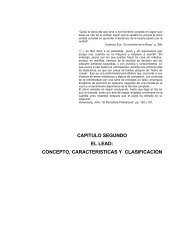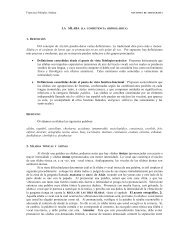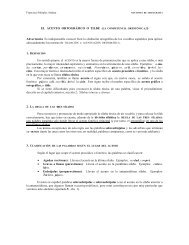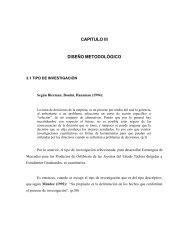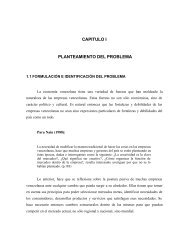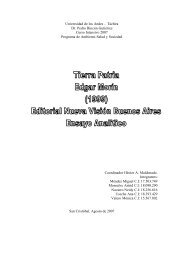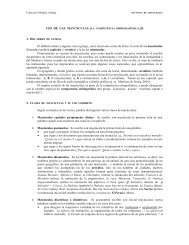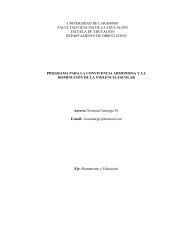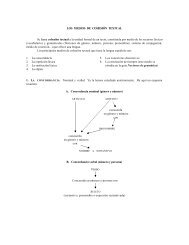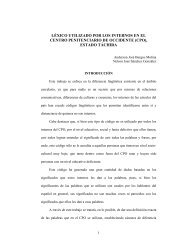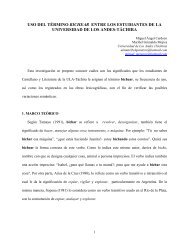No cumple el axioma de completitud ya que si tomamos una parte ...
No cumple el axioma de completitud ya que si tomamos una parte ...
No cumple el axioma de completitud ya que si tomamos una parte ...
Create successful ePaper yourself
Turn your PDF publications into a flip-book with our unique Google optimized e-Paper software.
2. Coló<strong>que</strong>se en la primera fila y primera columna los números d<strong>el</strong> 1 al 9:<br />
* 1 2 3 4 5 6 7 8 9<br />
1<br />
2<br />
3<br />
4<br />
5<br />
6<br />
7<br />
8<br />
9<br />
3. Ahora, en la segunda fila colo<strong>que</strong>n los números <strong>de</strong> 1 en 1; en la segunda fila <strong>de</strong> 2 en<br />
dos; en la fila 3 <strong>de</strong> tres en tres y así suce<strong>si</strong>vamente con <strong>el</strong> resto <strong>de</strong> filas.<br />
* 1 2 3 4 5 6 7 8 9<br />
1 1 2 3 4 5 6 7 8 9<br />
2 2 4 6 8 10 12 14 16 18<br />
3 3 6 9 12 15 18 21 24 27<br />
4<br />
5 5 10 15 20 25 30 35 40 45<br />
6<br />
7 7 14 21 28 35 42 49 56 63<br />
8<br />
9 9 18 27 36 45 54 63 72 81<br />
4. Ya tenemos construida las tablas <strong>de</strong> multiplicar. Para conseguir <strong>el</strong> resultado <strong>de</strong> <strong>una</strong><br />
multiplicación <strong>de</strong>terminada proce<strong>de</strong>mos <strong>de</strong> la <strong>si</strong>guiente manera:<br />
¿Cuánto es 9x7?. Ubicamos primero la fila 9, luego la columna 7, <strong>el</strong> <strong>si</strong>tio don<strong>de</strong> se intercepte esta fila con la<br />
columna es <strong>el</strong> resultado <strong>de</strong>seado.<br />
69




